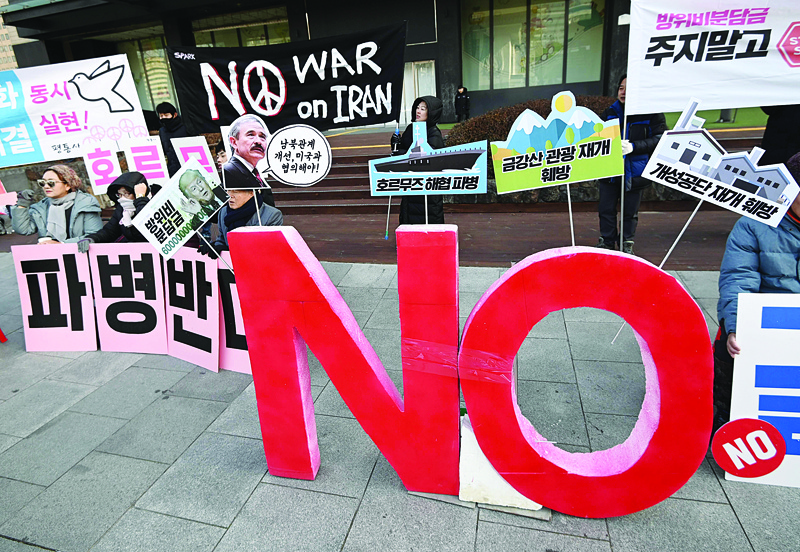
TEHRAN: Iran has confirmed two missiles were fired at a Ukrainian airliner brought down this month, in a catastrophic error that killed all 176 people on board and sparked angry protests. The country's civil aviation authority said it has yet to receive a positive response after requesting technical assistance from France and the United States to decode black boxes from the downed airliner. The Kiev-bound Ukraine International Airlines plane was accidentally shot down shortly after takeoff from Tehran's Imam Khomeini International Airport on Jan 8.
Iran has come under mounting international pressure to carry out a full and transparent investigation into the air disaster. "Investigators… discovered that two Tor-M1 missiles… were fired at the aircraft," Iran's Civil Aviation Organization said in a preliminary report posted on its website late Monday. It said an investigation was ongoing to assess the bearing their impact had on the accident.
The statement confirms a report in The New York Times which included video footage appearing to show two projectiles being fired at the airliner. The Tor-M1 is a short-range surface-to-air missile developed by the former Soviet Union that is designed to target aircraft or cruise missiles.
Iran had for days denied Western claims based on US intelligence reports that the Boeing 737 had been shot down. It came clean on Jan 11, with the Revolutionary Guards' aerospace commander Brigadier General Amirali Hajizadeh accepting full responsibility. But he said the missile operator who opened fire had been acting independently.
Black box impasse
The deadly blunder triggered days of student-led protests mainly in the Iranian capital. Supreme leader Ayatollah Ali Khamenei said on Friday that the demonstrations were unrepresentative of the Iranian people and accused the country's enemies of exploiting the air disaster for propaganda purposes. In its report, the Civil Aviation Organization said it was "impossible" for it to read the flight data and cockpit voice recorders - commonly known as black boxes - because they were so advanced.
But it suggested Iran wants to keep them for now. "If devices are provided, the information (on the black boxes) can be restored and retrieved in a short period of time," it said. The aviation body said it had asked its French and US counterparts, the BEA and NTSB respectively, to provide a list of the equipment required to read the black boxes.
It said it had also sought the transfer of the equipment, but added that neither the BEA nor NTSB had "so far responded positively". It said it had acquired the list nonetheless, without saying how, and hinted it would use it to buy the equipment itself. The report said that based on passports used to board Flight PS752, there were 146 Iranians, 11 Ukrainians including nine crewmembers, 10 Afghans and four Swedes on the ill-fated airliner. Canada, which says 57 of its nationals were on the plane, has repeatedly asked Iran to hand the black boxes over to Ukraine or France for expert analysis.
US-Iran tensions
The 737 was downed when Iran's air defenses had been on high alert hours after its armed forces fired more than 20 ballistic missiles at US troops stationed in Iraq. That was carried out in reprisal for a Jan 3 US drone strike that killed Iran's most prominent military commander, Qasem Soleimani, near Baghdad airport. US President Donald Trump had been poised to retaliate for the missile attack, but refrained after the missiles caused no casualties.
Meanwhile, South Korea will send a naval destroyer and 300 troops to the Strait of Hormuz, its defense ministry said yesterday, after pressure from its ally the US in the face of tensions between Washington and Tehran. Iran has been blamed for a series of attacks on shipping vessels in the strait, a strategic choke point for the world's oil trade where the US has deployed a naval mission. But the request put Seoul in a dilemma: It has had diplomatic relations with Tehran since the early 1960s and until last year Iran was one of the resource-poor South's key oil suppliers.
The defense ministry said in a statement that Seoul had decided to "temporarily expand" the deployment area of its anti-piracy military unit operating off the coast of Somalia to include the Arabian Gulf and the Gulf of Oman, which are linked by the Strait of Hormuz. It would not be part of the US naval mission, it insisted - although two liaison officers would be sent to the US headquarters for "information sharing".
Seoul and Washington are in a security alliance but their relations have been strained by the Trump administration's demands the South pay billions of dollars more towards the costs of 28,500 US troops stationed in the country to protect it from the nuclear-armed North. US Ambassador Harry Harris last week urged Seoul to join in the naval mission, saying "very few countries have a greater need" to take part as the South "gets 70 percent of its oil supplies from the Middle East". - Agencies




